Contents
- 1. Maximize Vertical Space with Smart Storage Solutions
- 2. Choose Multi-Functional Furniture and Appliances
- 3. Brighten Your Kitchen with Light Colors and Reflective Surfaces
- 4. Maximize Cabinet Space with Smart Organizational Tools
- 5. Use Strategic Lighting to Create an Illusion of Space
- 6. Keep Countertops Clutter-Free for a Spacious Look
- 7. Choose Compact, Space-Saving Appliances
- 8. Utilize Unused Spaces with Clever Storage Solutions
- 9. Design with Space Efficiency in Mind
- 10. Keep It Simple and Minimalistic
Small kitchens don’t have to mean small functionality. With the right strategies, you can transform a compact kitchen into an organized, stylish, and highly efficient space. Lack of square footage is no longer a barrier—what matters most is smart design, clever storage ideas, and a little creativity.
In this guide, we’ll share easy, practical, and budget-friendly tips to maximize every inch of your small kitchen. From innovative storage solutions to design hacks that create the illusion of space, these ideas will help you create a kitchen that works beautifully without feeling cluttered.
Whether you’re living in a city apartment or simply working with a modest layout, these tricks will make cooking, entertaining, and even cleaning a much more enjoyable experience.
1. Maximize Vertical Space with Smart Storage Solutions
When it comes to small kitchens, every inch counts—and that includes the space above your countertops and cabinets. One of the easiest and most effective ways to free up room is by using vertical space for storage.
Instead of letting your walls sit empty, consider installing tall cabinets that reach the ceiling. These provide extra room for items you don’t use every day, like seasonal dishes, special cookware, or small appliances. For a stylish and practical touch, add open shelves or wall-mounted racks to keep essentials like spices, mugs, or frequently used utensils within arm’s reach.
Hanging storage solutions—such as hooks for pots and pans or magnetic strips for knives—not only save counter space but also add a functional design element to your kitchen. According to the National Kitchen and Bath Association (NKBA), incorporating vertical storage can make your kitchen up to 20% more efficient.
Pro Tip: Use matching containers or decorative jars on open shelves for a tidy and cohesive look while keeping everyday items easily accessible.
2. Choose Multi-Functional Furniture and Appliances
In a small kitchen, every piece of furniture and appliance needs to work harder. The key to saving space without sacrificing functionality is opting for multi-purpose designs that do double—or even triple—duty.
Think beyond traditional furniture:
- Expandable or drop-leaf tables that transform from a compact breakfast nook into a larger dining area.
- Kitchen islands with built-in storage and pull-out cutting boards, which provide prep space, extra shelving, and even seating.
When it comes to appliances, go for models that combine features. For example:
- A microwave that doubles as a convection oven.
- A fridge with built-in water and ice dispensers.
- A dishwasher drawer that allows for smaller, efficient loads when needed.
According to a 2023 Houzz survey, 35% of homeowners with small kitchens choose multi-functional appliances, proving that this trend is here to stay. By investing in these versatile options, you can maximize space, improve efficiency, and create a kitchen that truly works for your lifestyle.
Pro Tip: Look for furniture on wheels—like a rolling kitchen cart or island—for added flexibility in a compact space.
3. Brighten Your Kitchen with Light Colors and Reflective Surfaces
When working with a small kitchen, color and finish choices can dramatically affect how spacious it feels. Light shades—such as soft whites, creams, and pastels—reflect more light, creating an airy and open atmosphere. Painting your walls, and especially the ceiling, in these hues can instantly make the room appear larger and brighter.
To amplify this effect, incorporate reflective surfaces like glossy tiles, glass backsplashes, and stainless-steel appliances. These finishes bounce natural and artificial light throughout the space, enhancing the illusion of depth and openness.
According to local interior design experts, using light colors combined with reflective materials can make a room feel up to 50% larger—a significant difference for small kitchens!
Pro Tip: Add mirrors or mirrored cabinet panels for an extra boost of light reflection and visual space.
4. Maximize Cabinet Space with Smart Organizational Tools
Even the tiniest kitchens often have untapped storage potential—it’s all about how you organize your cabinets. With the right tools, you can make every inch count and eliminate the dreaded “lost items in the back” problem.
Start by installing:
- Pull-out shelves for easy access to deep cabinets.
- Lazy Susans for corner spaces.
- Tiered racks to maximize vertical room inside cabinets.
For drawers, dividers keep utensils, gadgets, and small items neatly organized, preventing clutter and saving time when cooking.
According to a study by The Container Store, households using cabinet and drawer organizers experience a 30% increase in storage efficiency—a game changer for small kitchens!
Pro Tip: Use clear bins or labeled baskets for grouping similar items. This method makes everything visible and easy to grab.
5. Use Strategic Lighting to Create an Illusion of Space
Lighting can make or break a small kitchen design, and when done right, it creates the illusion of a bigger, brighter room. Start with natural light—keep windows clear of heavy curtains or layered blinds to let in as much daylight as possible. A simple sheer or a minimalist shade can maintain privacy while allowing light to flood the space.
Complement this with well-placed artificial lighting. Layer your lighting with:
- Under-cabinet lights to brighten countertops and eliminate dark shadows.
- Pendant lights over islands or dining areas for style and task lighting.
- Recessed lighting to provide even coverage across the room.
According to lighting experts, a well-lit kitchen not only appears larger but also improves functionality, making cooking and cleaning easier.
Pro Tip: Use warm LED lights for a cozy vibe, and consider dimmers to adjust brightness for different times of the day.
6. Keep Countertops Clutter-Free for a Spacious Look
Nothing makes a kitchen feel cramped faster than cluttered countertops. In a small kitchen, clear surfaces are essential for both aesthetics and functionality. The more visible counter space you have, the bigger and more open the kitchen will appear.
Here are some smart ways to free up counter space:
- Store small appliances like toasters, blenders, and coffee makers in cabinets or on open shelves when not in use.
- Install a wall-mounted magnetic knife strip instead of a bulky knife block.
- Use a hanging fruit basket or ceiling-mounted rack to keep produce off the counter.
- Add hooks for utensils or a pegboard for frequently used tools.
Messy countertops aren’t just unattractive—they also make cooking less efficient and enjoyable. A clutter-free kitchen feels bigger, cleaner, and more functional.
Pro Tip: Follow the “one-touch rule” – if an item isn’t used daily, it shouldn’t live on your counter.
7. Choose Compact, Space-Saving Appliances
In a small kitchen, every inch matters, so selecting compact appliances is key to maximizing space without sacrificing functionality. Instead of standard bulky models, opt for slim and multi-purpose alternatives, such as:
- Convection ovens that can bake, broil, and air-fry in one.
- Slimline dishwashers for efficient cleaning without taking up an entire cabinet.
- Counter-depth or narrow refrigerators that blend seamlessly into your layout.
Modern compact appliances are available in a variety of designs, colors, and finishes, so you can maintain both aesthetic appeal and practicality. Many interior design experts recommend prioritizing appliances that not only save space but also match your overall kitchen style.
Pro Tip: Look for multi-functional appliances, such as a microwave with built-in convection or a washer-dryer combo, to maximize efficiency.
8. Utilize Unused Spaces with Clever Storage Solutions
In a small kitchen, every overlooked nook and cranny is an opportunity for storage. Instead of leaving these areas empty, turn them into smart storage zones that reduce clutter and keep essentials organized.
Here are a few ideas to make the most of unused spaces:
- Above the Refrigerator: Add cabinets or open shelves for storing infrequently used items like large pots or serving platters.
- Over the Stove: Install custom shelves or slim cabinets for spices, oils, or cookware.
- Toe-Kick Drawers: These hidden drawers beneath lower cabinets are perfect for flat items like baking sheets, trays, and cutting boards.
- Corners & Niches: Use corner shelving or a lazy Susan to maximize awkward spaces that often go to waste.
By transforming unused areas into functional storage, you can keep your countertops clear and maintain a more spacious, organized kitchen.
Pro Tip: Invest in custom cabinetry if possible—it can unlock hidden potential in tight spaces that standard solutions often miss.
9. Design with Space Efficiency in Mind
When planning a small kitchen, space efficiency should be your top priority. A well-thought-out design ensures that every square inch serves a purpose, making your kitchen both functional and stylish. Start by considering:
- Layout: Choose a layout that maximizes movement and workflow, such as a galley or L-shaped design.
- Component Sizing: Opt for appropriately scaled appliances, cabinets, and countertops to prevent overcrowding.
- Dedicated Zones: Assign specific areas for cooking, prep, and storage to maintain an organized, clutter-free environment.
For homeowners, working with an experienced kitchen designer can make all the difference. Professionals often use advanced tools like SolidWorks design software to create precise layouts that optimize even the smallest spaces.
Pro Tip: If you’re skilled with SolidWorks and passionate about functional design, there are remote job opportunities that allow you to work on innovative kitchen projects from anywhere.
10. Keep It Simple and Minimalistic
When it comes to maximizing a small kitchen, less is more. Embracing a minimalist design not only makes the space look bigger but also creates a calm, clutter-free environment.
Start by decluttering countertops and cabinets, keeping only the essentials. Avoid excessive décor or unnecessary gadgets that take up valuable space. A clean, streamlined look with smooth lines and minimal ornamentation will make your kitchen feel more open and inviting.
Choose neutral color palettes and sleek finishes, which enhance the sense of spaciousness. Incorporating multi-purpose furniture and smart storage solutions ensures everything has a place without overcrowding the room.
The key is simplicity combined with functionality. By focusing on a minimalist approach, you can design a small kitchen that’s efficient, stylish, and easy to maintain.

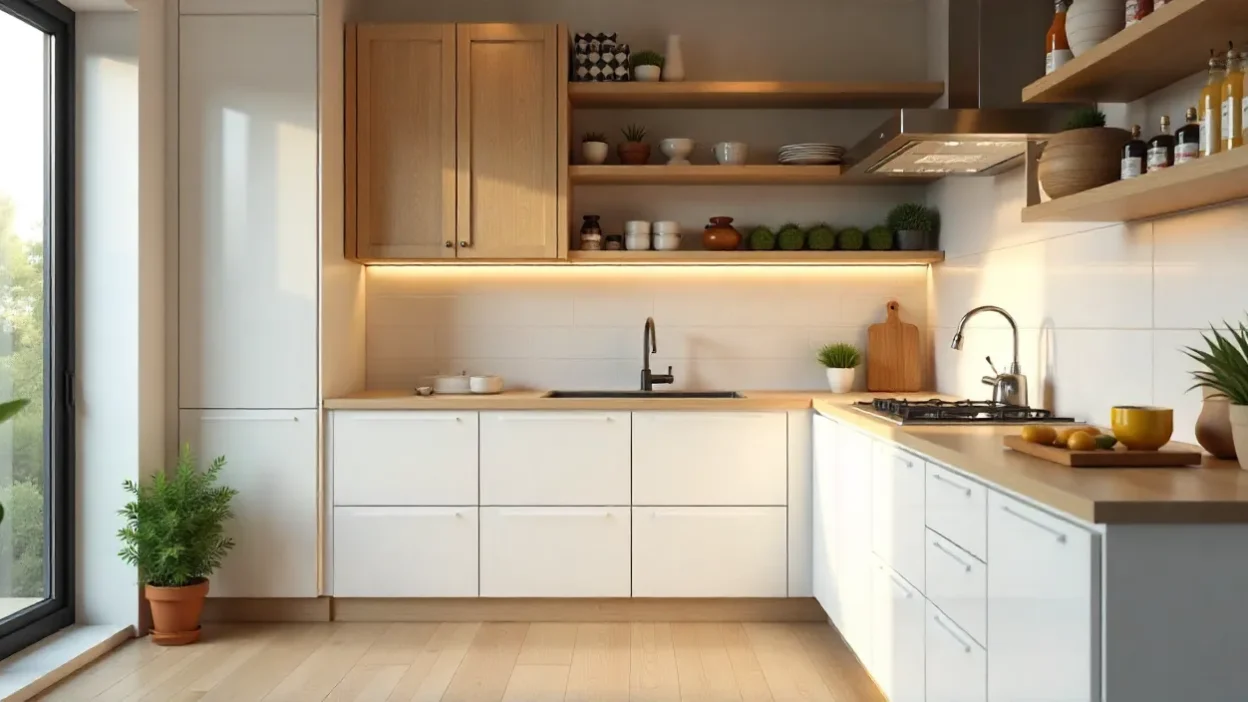
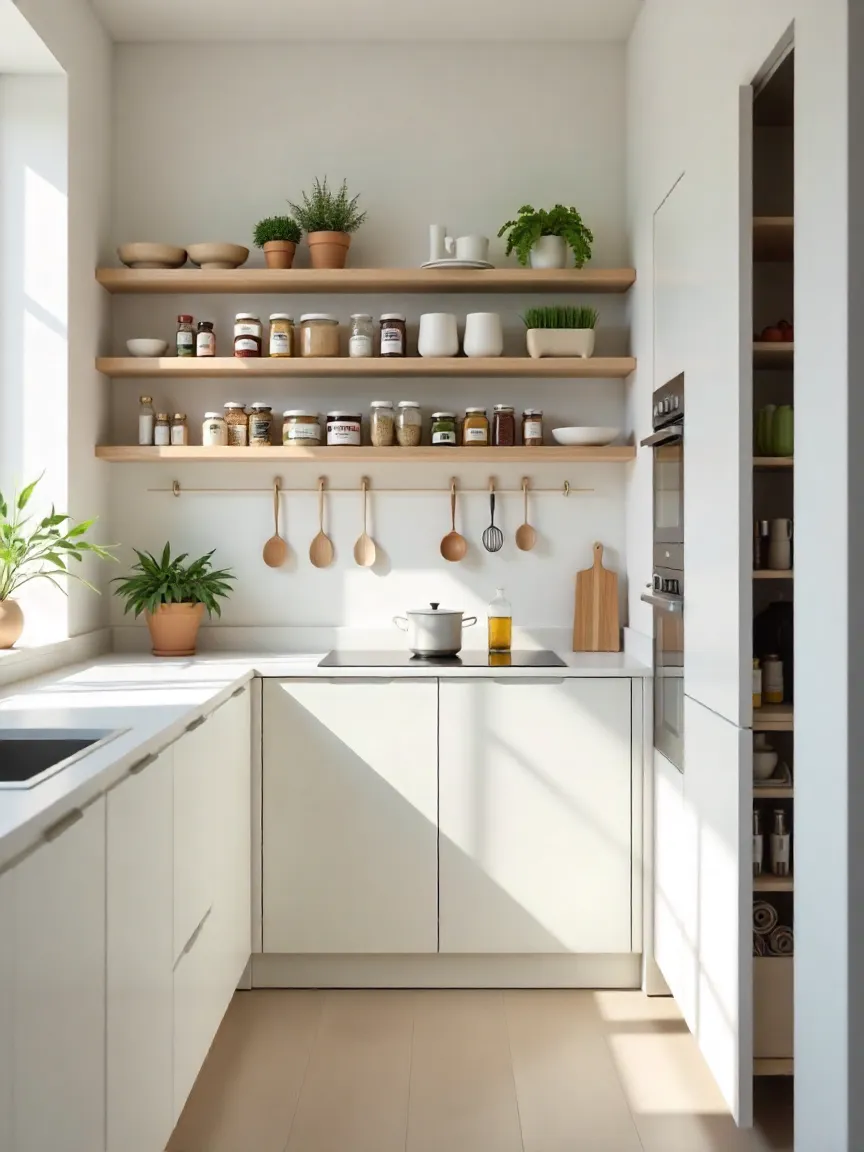
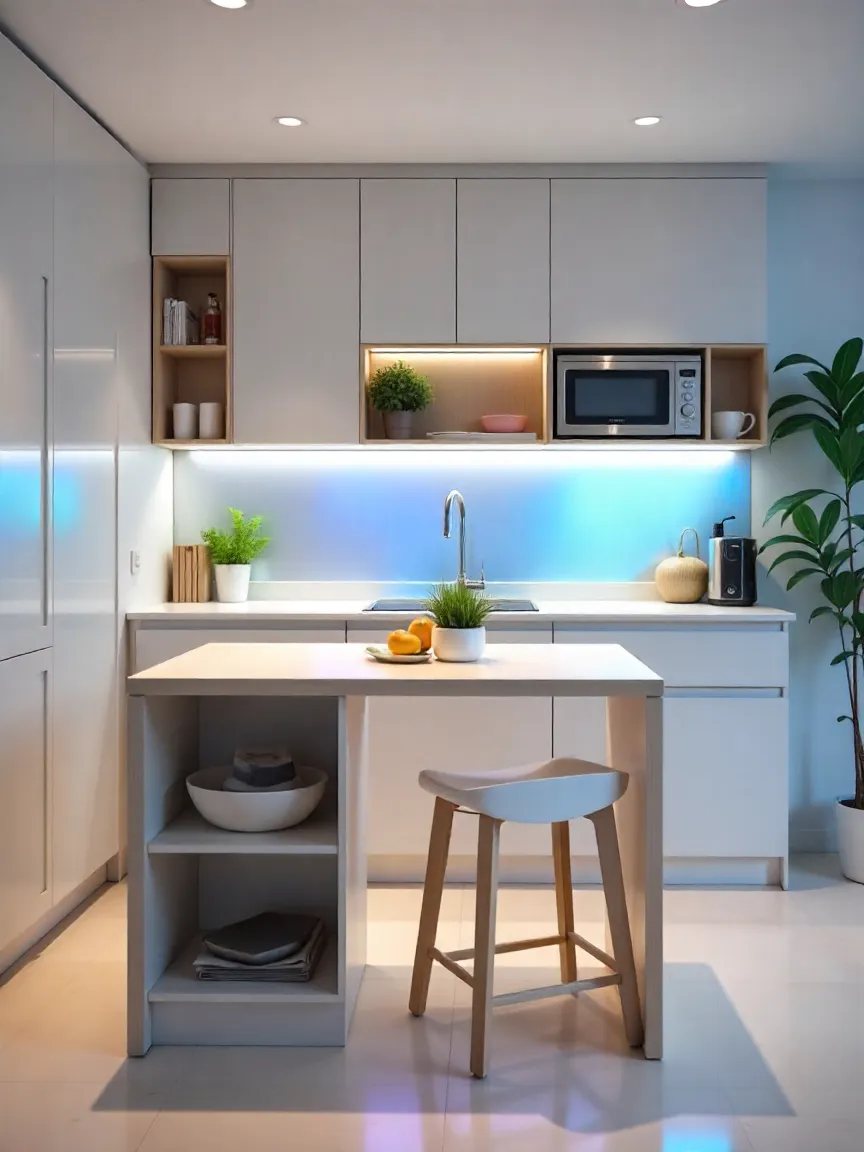

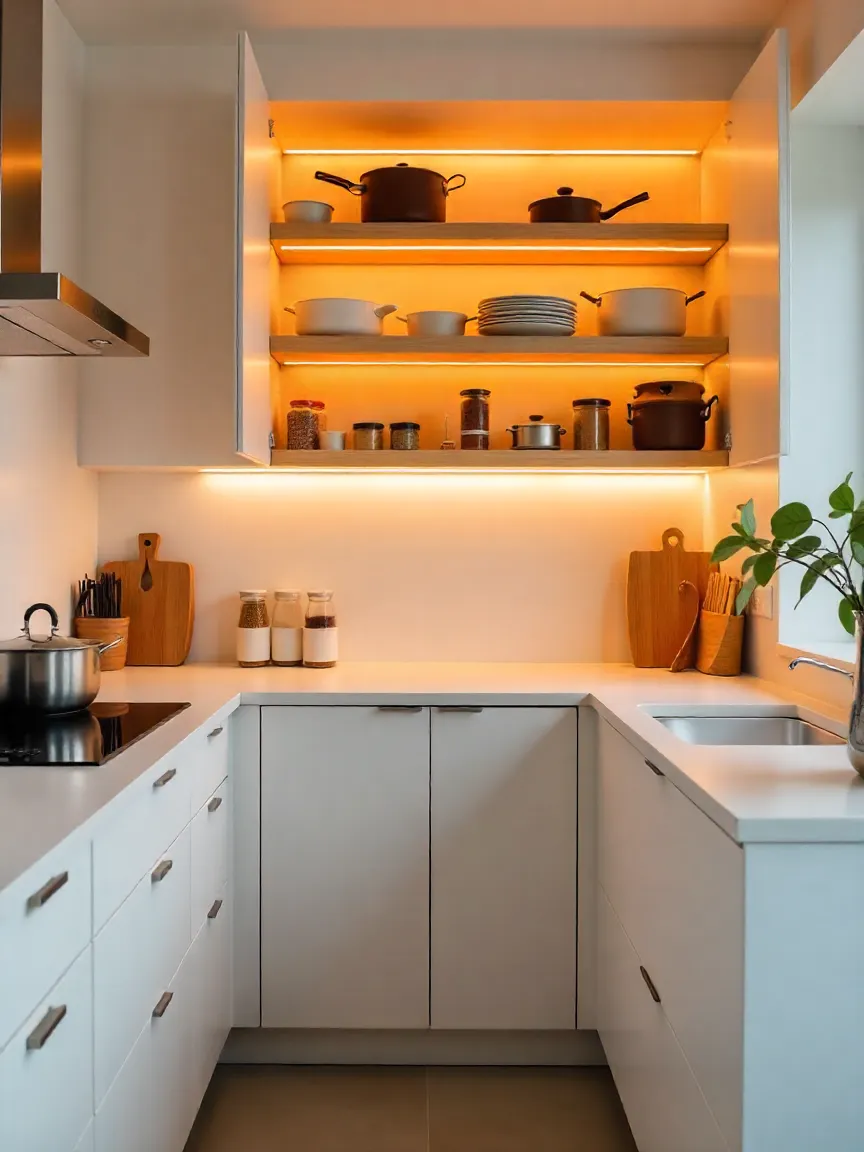
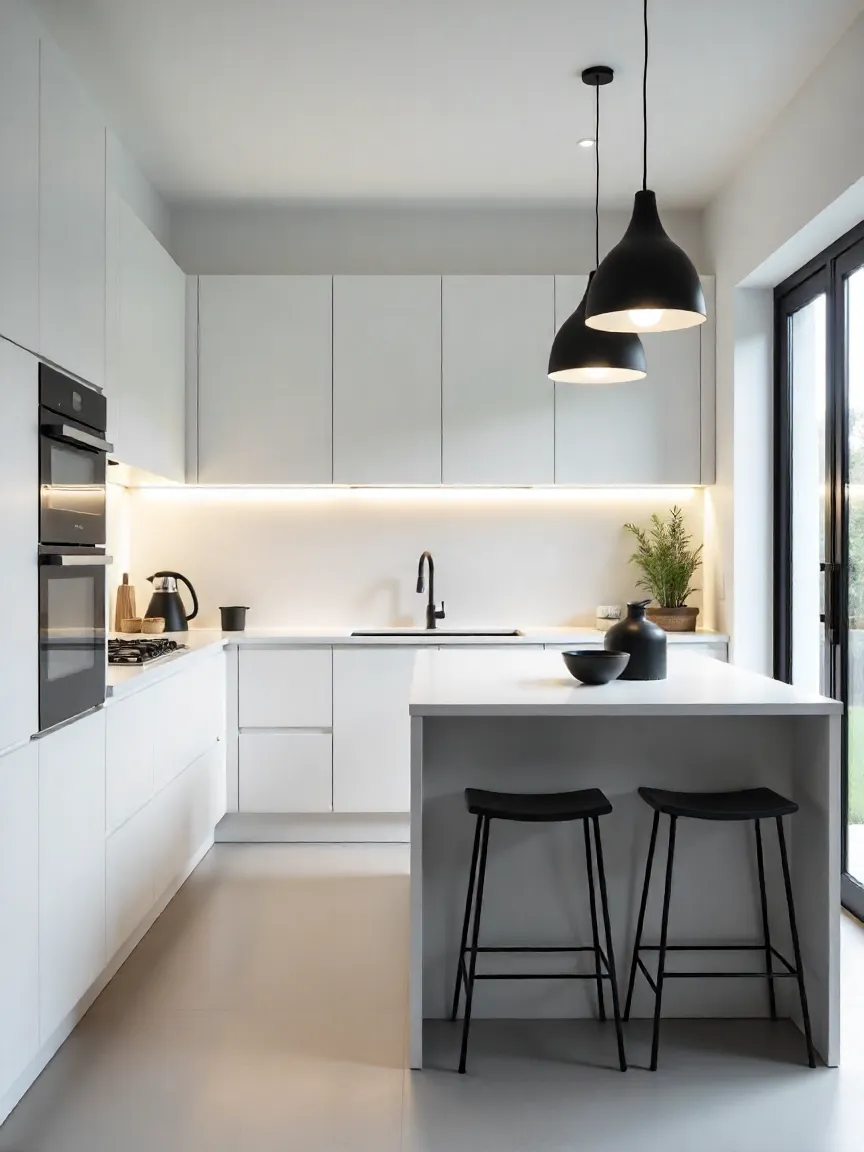
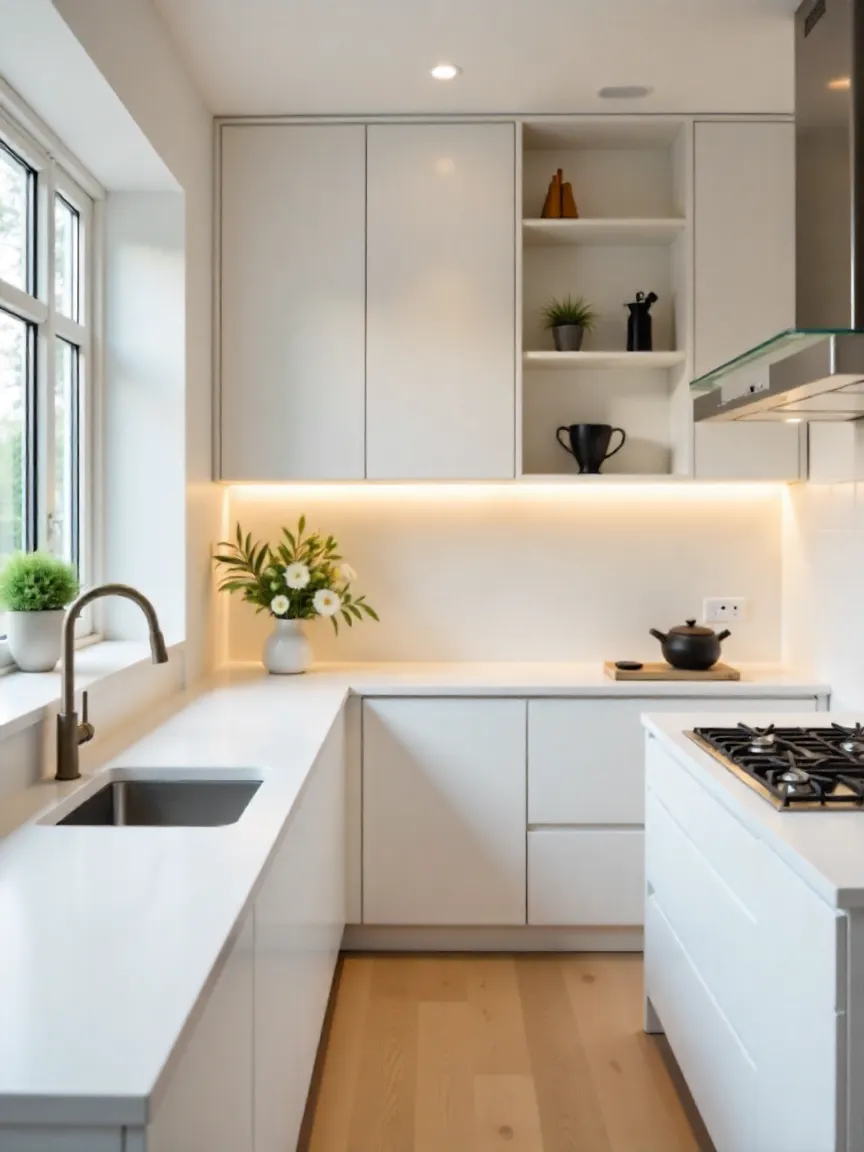
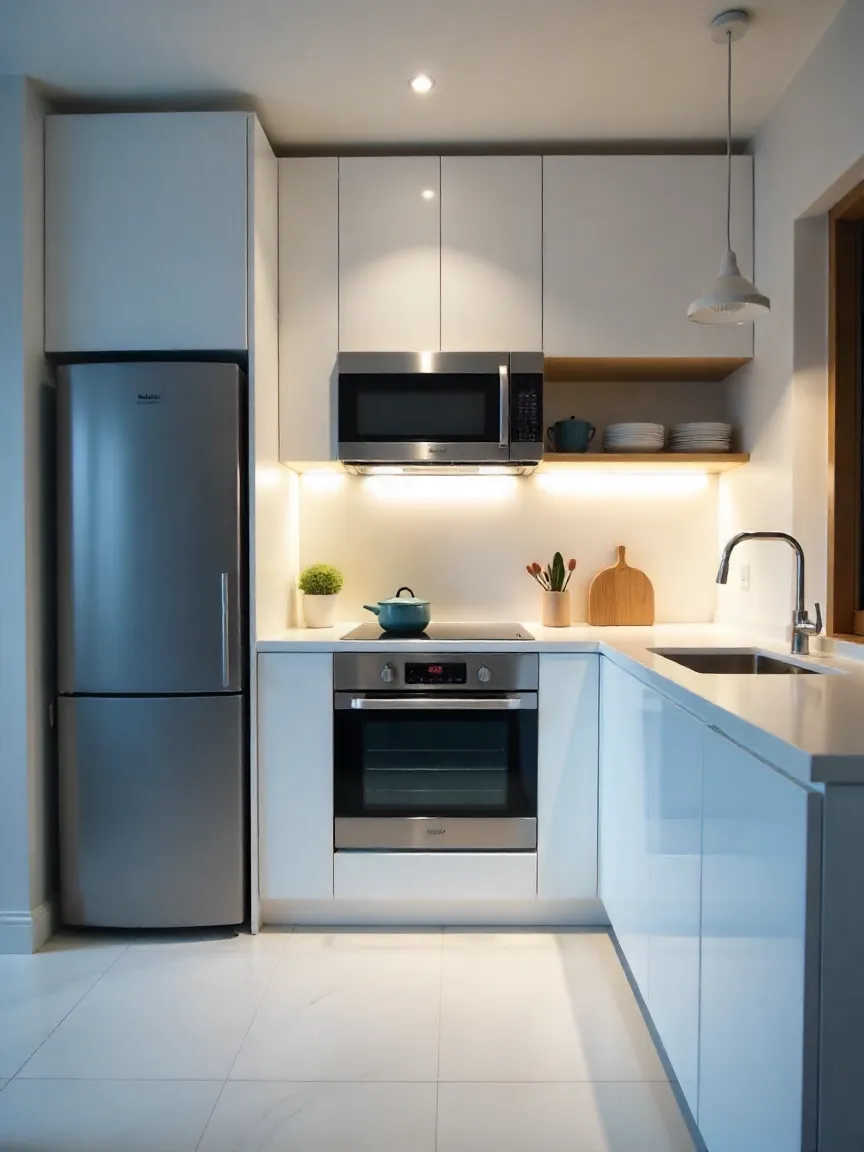
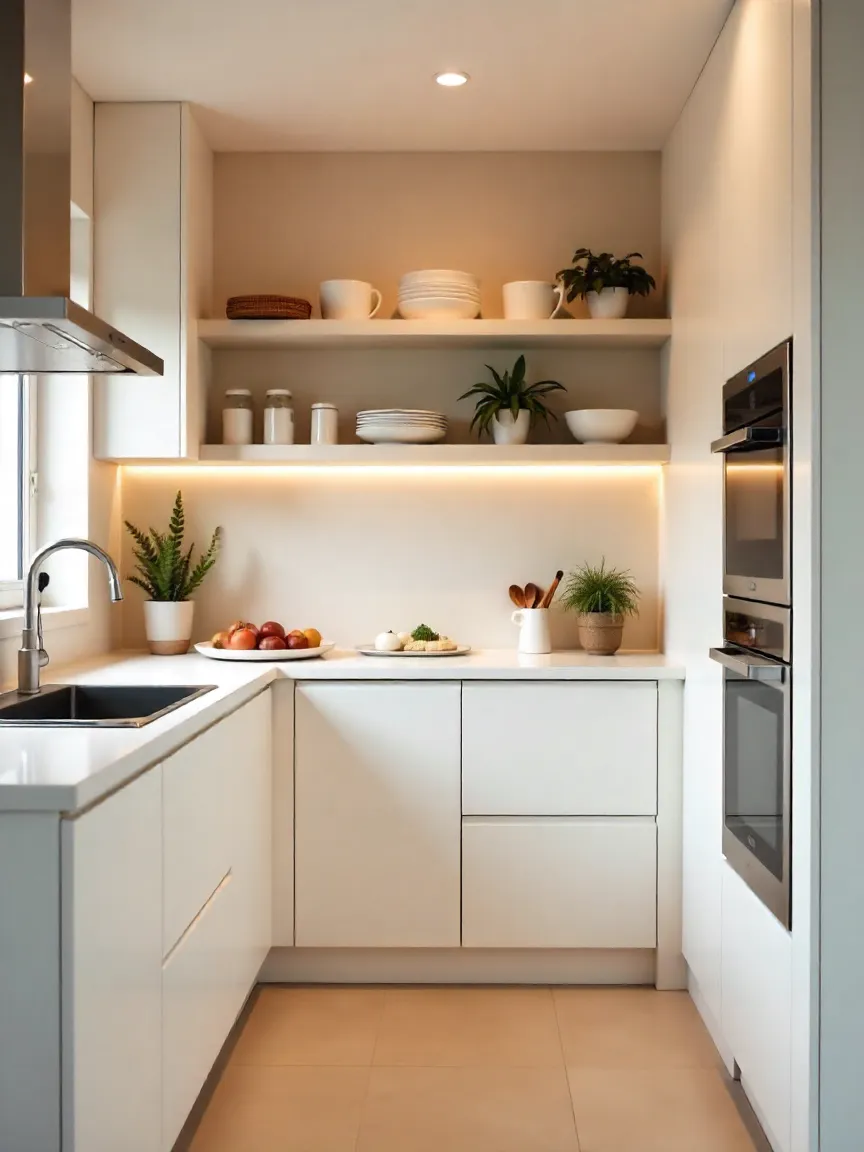
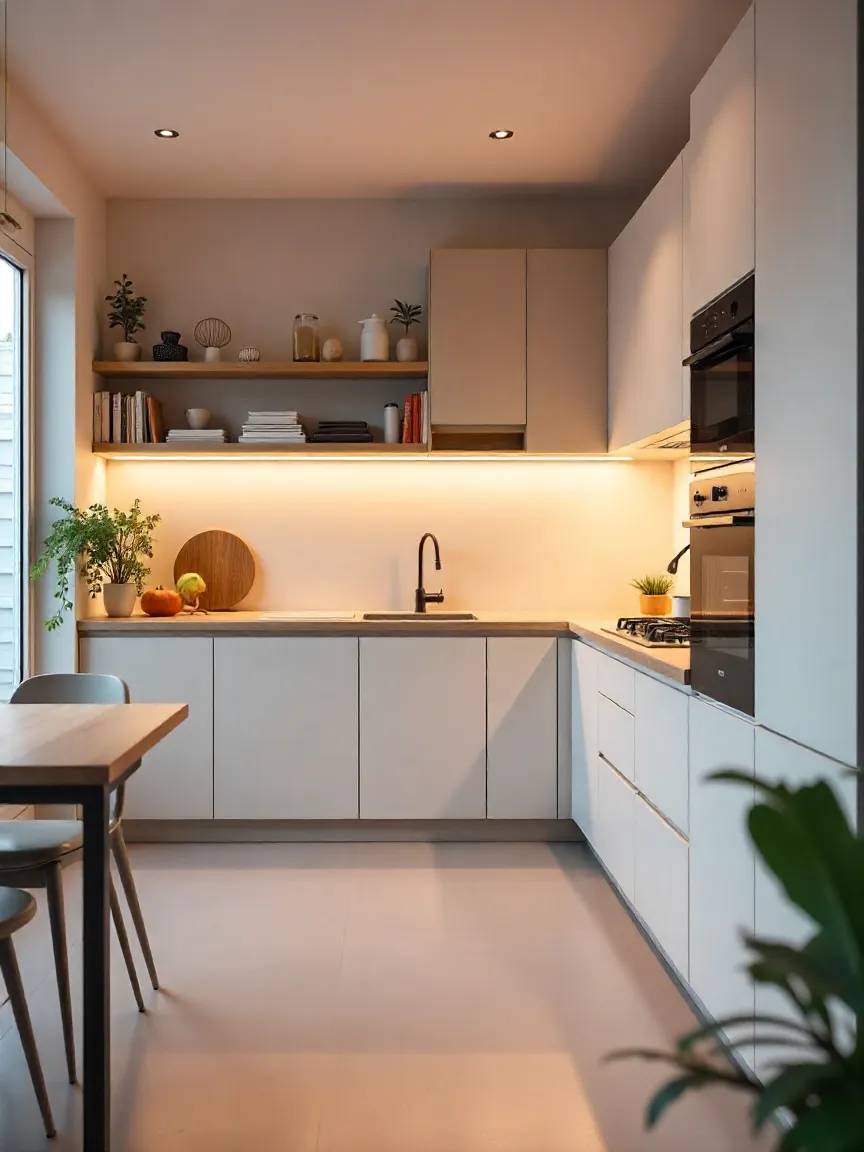
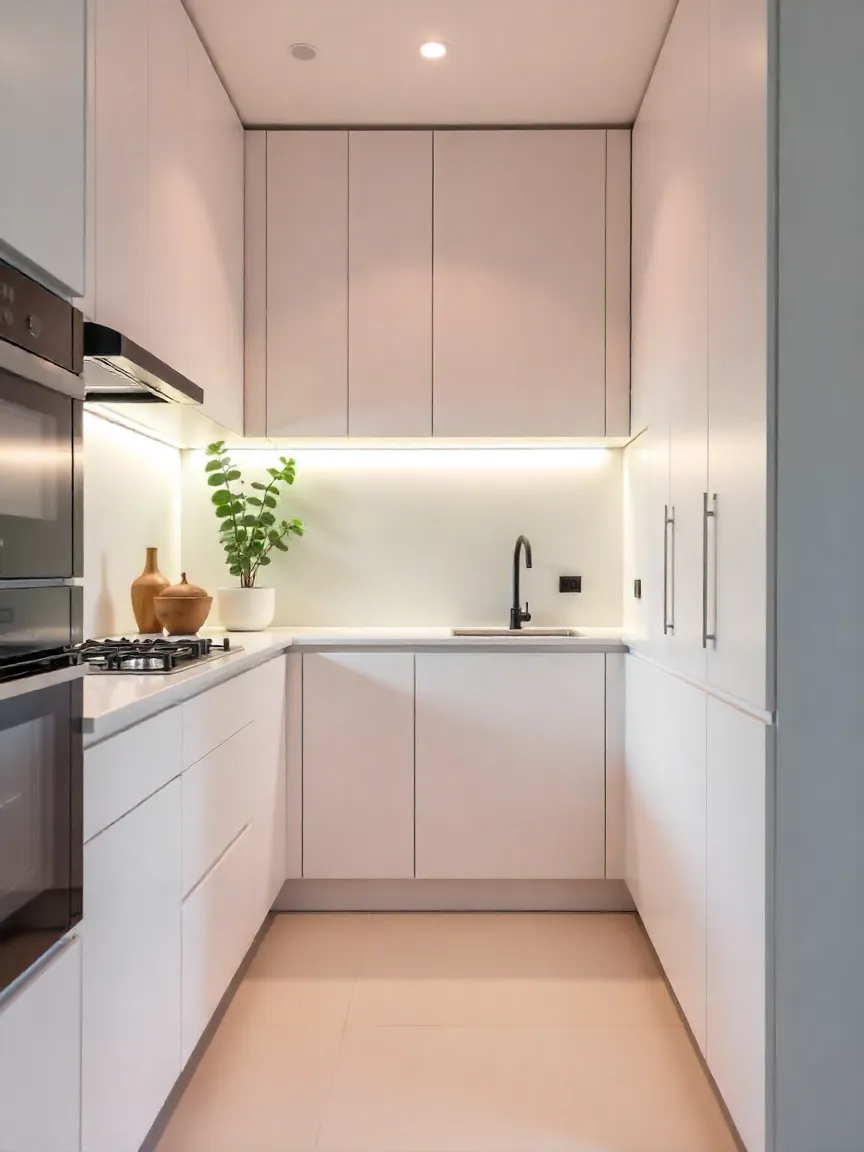
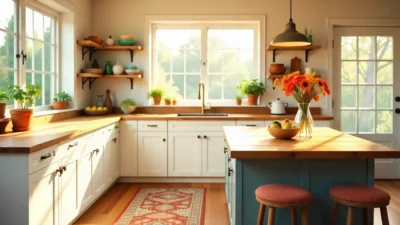
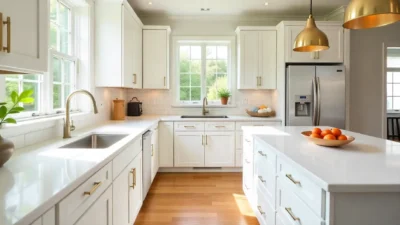
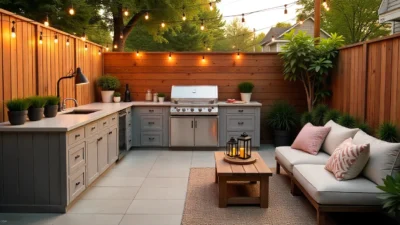
Great tips! I’m especially interested in the budget-friendly storage solutions – my tiny kitchen is desperately in need of an upgrade.